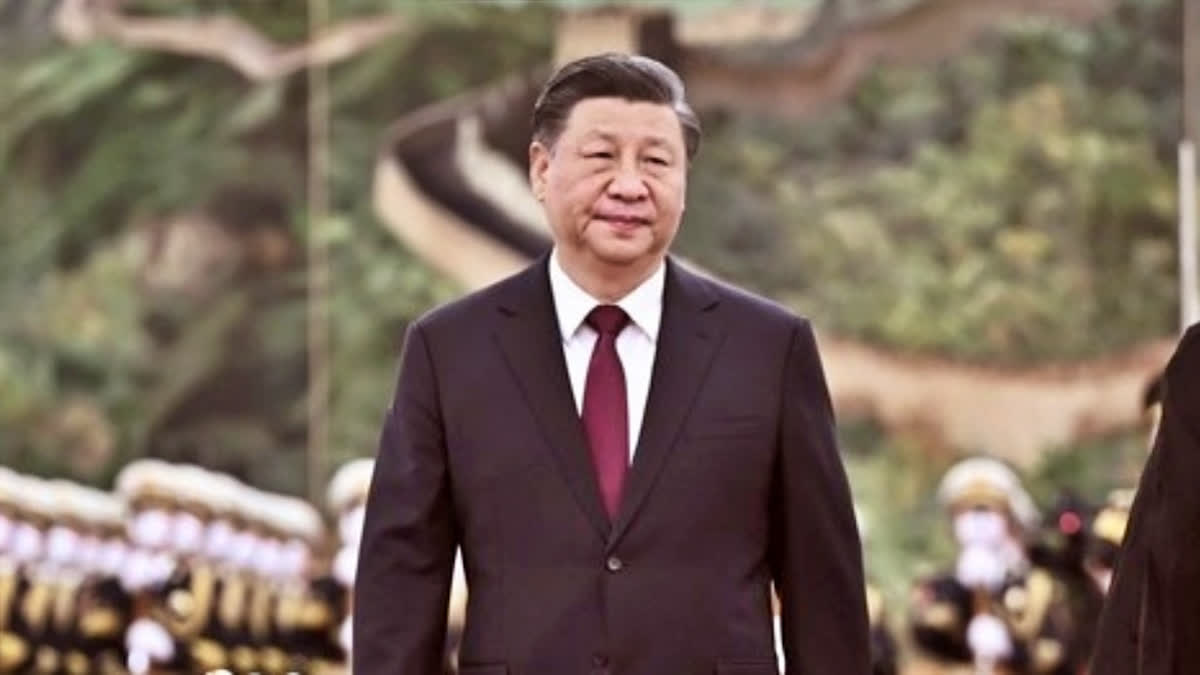New Delhi: For the fourth time since 2017, China has released a new list of names for places and sites in the northeast Indian state of Arunachal Pradesh, in what is the latest manifestation of Beijing’s claims over territories in other countries.
The latest list released by China’s Ministry of Civil Affairs contains new names for 30 places and sites in Arunachal Pradesh. These include 11 residential areas, 12 mountains, four rivers, one lake, one mountain pass and a piece of land. All the names have been given in Chinese characters, Tibetan, and Pinyin, the Roman alphabet version of Mandarin Chinese, the South China Morning Post reported.
China first released a list of new names for six places in Arunachal Pradesh in 2017. This was followed by a second list of 15 places in 2021, and then a third list of names for 11 places in 2023. China refers to Arunachal Pradesh as Zangnan or south Tibet, a territory Beijing claims to be a part of the Tibet Autonomous Region. In Mandarin Chinese, Zang refers to Tibet and “nan” means south.
India is not the only country where China has coined new names for places and sites. One notable example of China renaming places in other countries is its actions in the South China Sea. China has asserted territorial claims over various islands, reefs, and shoals in the region, many of which are also claimed by other countries such as Vietnam, the Philippines, Malaysia, Brunei, and Taiwan. Despite international disputes over sovereignty, China has renamed several features in the South China Sea.
China has renamed several features within the Paracel Islands, known as the Xisha Islands in Chinese. For example, Woody Island, which is also claimed by Vietnam, has been given the Chinese name Yongxing Island.
Similarly, China has renamed features within the Spratly Islands, known as the Nansha Islands in Chinese. For instance, Fiery Cross Reef, claimed by China, the Philippines, and Vietnam, has been given the Chinese name Yongshu Reef. China refers to Scarborough Shoal, which is also claimed by the Philippines, as Huangyan Island in Chinese. China’s renaming of this feature reflects its claim of historical sovereignty over the area.
In the East China Sea, a group of uninhabited islands referred to as Senkaku Islands in Japanese, are called Diayou Islands in Chinese. It is worth mentioning here that China has released the latest list of new names for places and sites in Arunachal Pradesh, following Prime Minister Narendra Modi’s visit to the northeastern state last month. During the course of his visit, Modi inaugurated the Sela Tunnel at an altitude of 13,000 feet to provide all-weather connectivity to strategically-located Tawang. The tunnel is also expected to ensure better movement of troops along the frontier region.
As expected, China protested Modi’s visit to Arunachal Pradesh, which New Delhi immediately dismissed. “We reject the comments made by the Chinese side regarding the visit of the Prime Minister to Arunachal Pradesh,” External Affairs Ministry spokesperson Randhir Jaiswal had said in response to media queries regarding the comments from the Chinese side.
“Indian leaders visit Arunachal Pradesh from time to time, as they visit other states of India. Objecting to such visits or India’s developmental projects does not stand to reason,” Jaiswal said. According to MS Pratibha, Associate Fellow at the East Asia Centre in the Manohar Parrikar Institute of Defence Studies and Analyses, China resorts to this tactic of coining new names for places in other countries whenever it feels that its sovereignty is being challenged.
“This is something they generally do in Chinese maps to show to their people that these places are part of China’s territory,” Pratibha told ETV Bharat. India and China have had a longstanding territorial dispute over Arunachal Pradesh, with both sides periodically asserting their claims. China’s renaming of locations in Arunachal Pradesh is seen as a means to bolster its territorial claim and challenge India's sovereignty in the region.
China’s claims to Arunachal Pradesh are based on historical assertions of sovereignty, including references to past governance structures and cultural ties. By renaming places in the region with Chinese names, Beijing aims to reinforce the narrative of historical control over the area. This tactic is part of a broader effort to reshape historical narratives in support of its territorial claims.
Arunachal Pradesh holds strategic significance due to its proximity to the Line of Actual Control (LAC), the de facto border between India and China. Control over this region provides geopolitical advantages, including access to natural resources, strategic military positioning, and influence over neighbouring states. China’s renaming of locations in Arunachal Pradesh is thus intertwined with its broader geopolitical ambitions in the region.
Renaming places and sites is a symbolic way for China to assert control and influence over Arunachal Pradesh. By imposing Chinese names on these locations, Beijing seeks to shape perceptions and establish a sense of authority over the region, both domestically and internationally. This tactic is part of a broader strategy of psychological warfare aimed at undermining India’s claims and reinforcing China's dominance.
According to Pratibha, China’s release of the latest list of new names for locations in Arunachal Pradesh might be because Beijing felt that it needs to give a proportionate response to Modi’s visit. “There are a variety of ways in which way they respond,” she said. “This is one way. However, it does not change the fact that Arunachal Pradesh is Indian territory.”
Read More
China Holds Anniversary Celebrations of Its Tibet Takeover in Villages Along India, Bhutan Borders
Zangnan Is China's Territory Since Ancient Times: Beijing's Never-Ending Claim on Arunachal Pradesh


